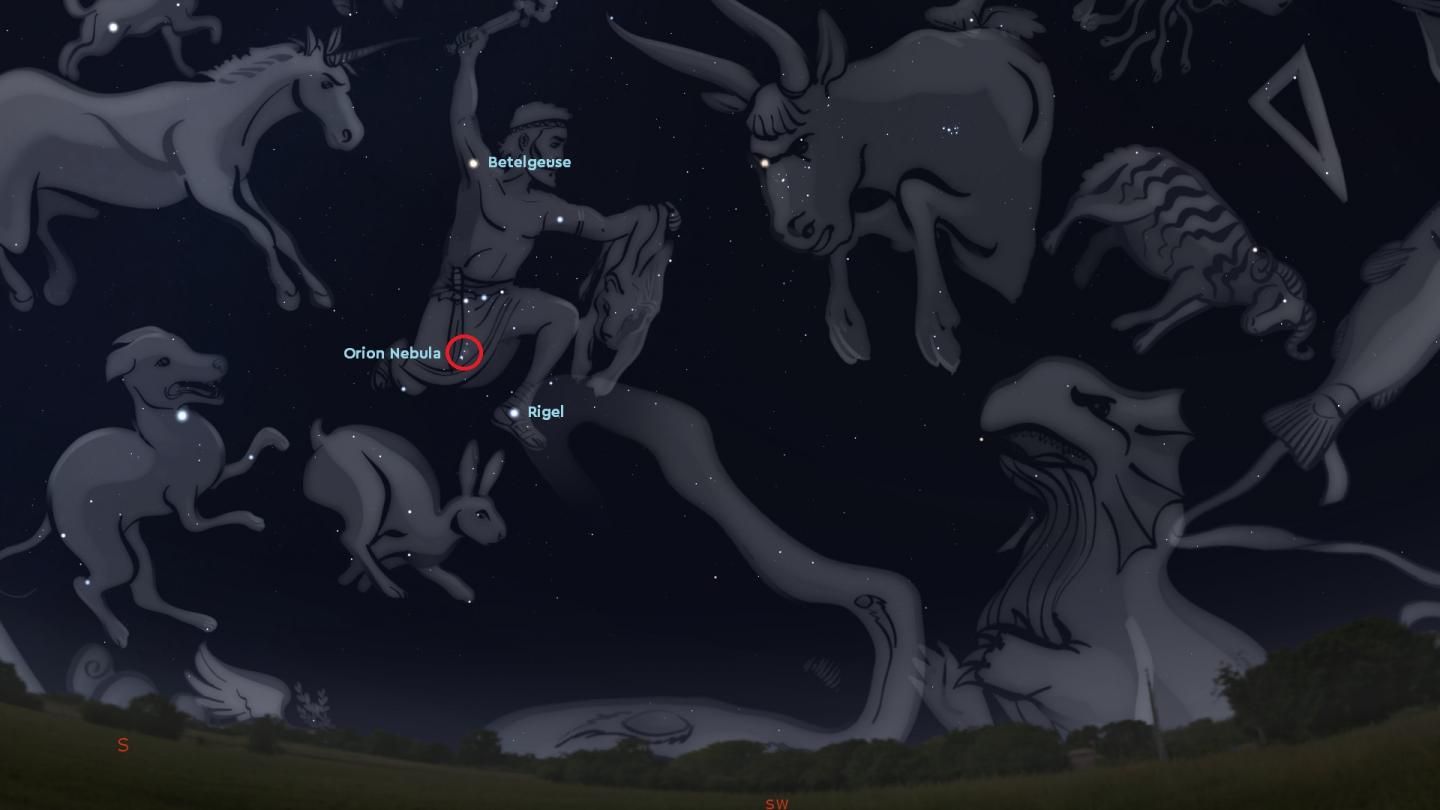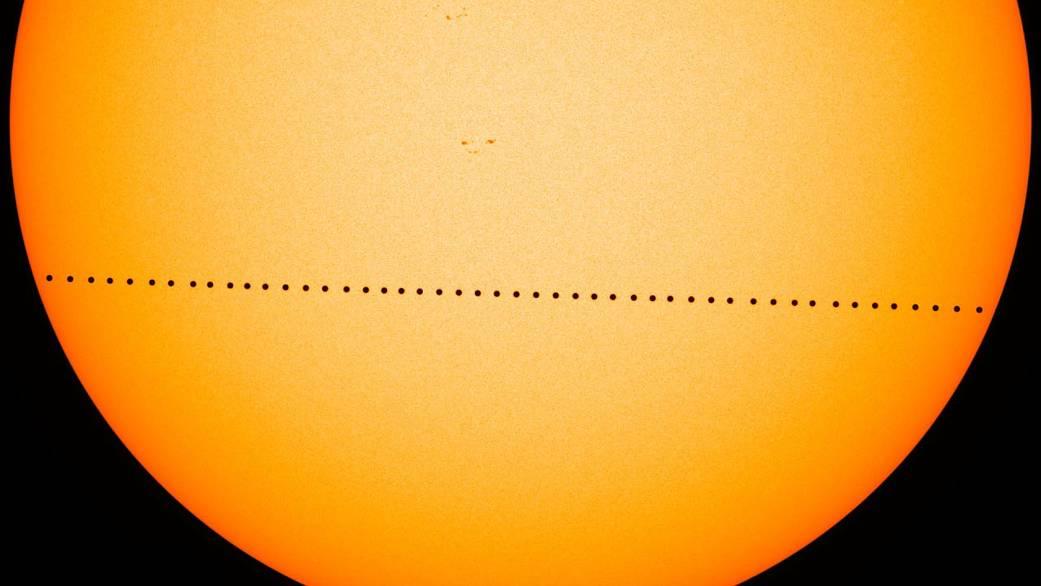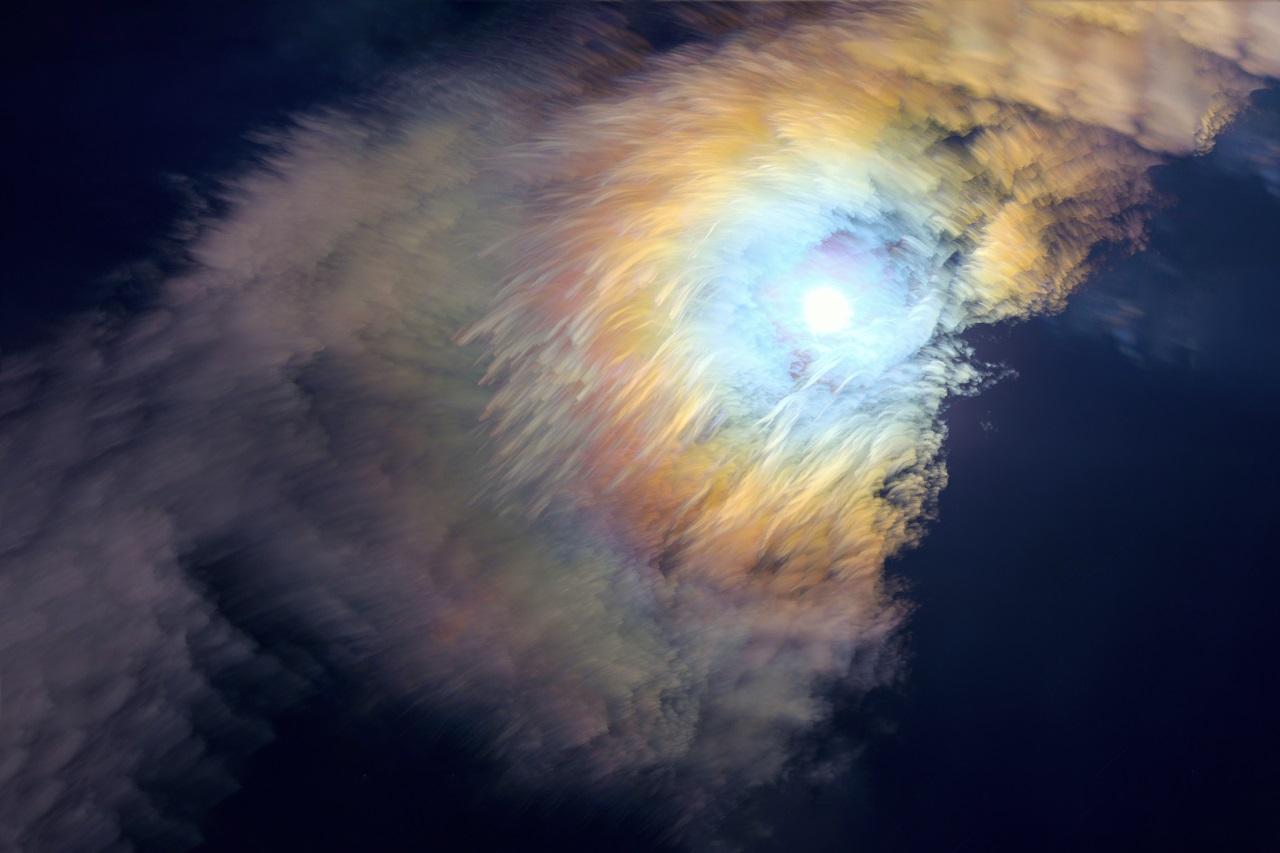
Discover what to see in the night sky during November 2019, including the transit of Mercury.
By Patricia Skelton, Astronomy Education Officer
(Details given are for London and may vary for other parts of the UK)
Top 3 things to see in the night sky in November:
- Throughout the month: Explore the constellation of Orion the Hunter.
- 11 November: Don't miss an opportunity to see the transit of Mercury.
- 16/17 November: Keep an eye open for meteors from the Leonids meteor shower.
Look Up! Podcast
Subscribe and listen to the Royal Observatory Greenwich podcast. As well as taking you through what to see in the night sky each month, Royal Observatory Greenwich astronomers pick their favourite astro news story. For November, they're chatting about how new observations of protoplanetary discs are making astronomers rethink planetary formation and they do a bit of time travel and talk about the first closeup image of Mars taken by the Mariner 4 spacecraft. Have a listen below then vote for your favourite news story on our Twitter poll during the first week of the month.
Our podcast is also available on iTunes here.
Astronomy in November 2019: key events and what to see
Throughout the month: Orion the Hunter

The winter months brings back one of the most well-known of the constellations, Orion the Hunter. Its familiar shape plays host to a number of fascinating sights for astronomers of all abilities. Its brightest stars, Betelgeuse and Rigel, are clear examples of how stars can have differing colours depending on their class. Even to the unaided eye, Betelgeuse is a deep orange colour, while Rigel is a bright blue-white. Each are supergiant stars late in their evolution, each a candidate for a future supernova. If Betelgeuse did explode, the bright burst of light would be visible even during the day and last for many weeks or months. It would also represent the closest supernova to Earth studied in the modern age by a very long way. Unfortunately, it is unlikely, though not impossible, to occur within our lifetimes.
Elsewhere in Orion, more advanced astronomers can try to observe the great Orion Nebula, a vast cloud of interstellar gas and dust that is one of the most active star forming regions in the relatively local region of the Galaxy. It can be found just below Orion’s belt in his sword or dagger, is visible through binoculars or a small telescope, and with some clever astrophotography can be one of the most accessible deep sky objects for photography, providing an excellent target to hone your skills on.
2 November: The Moon

The Moon this month begins as a thin waxing crescent, having had the new moon phase on the 28 October. At this time, the Moon comes into a close conjunction with the planet Saturn meaning a single telescope view could accommodate both the narrow crescent and the ringed planet. In some parts of the world near New Zealand, the Moon will actually pass directly in front of Saturn, blocking it from a view, an event known as an occultation. Wide surveys of the sky often pick up random occultations between small solar system bodies and distant stars. This can be an effective way of finding these dim neighbours in our own solar system.
Find out more about the Moon at our exhibition
11 November: Transit of Mercury

On the 11 November, the most anticipated event of the month will occur: the transit of Mercury across the face of the Sun. A relatively rare event, the last transit of Mercury was in 2016 while the next won’t happen until 2032. The event itself will last several hours, beginning at 12.35pm and ending at 6.05pm GMT. While the transit of Venus in 2012 was readily visible to those wearing eclipse-glasses, Mercury is both much smaller and further away than Venus, making it too small to be seen. Instead, a telescope with a carefully fitted solar filter would be required to view the transit. It is also possible that a telescope could be used to carefully project an image of the Sun onto white card or paper. While safe enough for viewing, if the Sun slips out of view of the eyepiece, it will instead be projected onto the inner workings of the telescope which can cause damage, so only do this if you are confident in the technique. Historically transits of Mercury and Venus have been instrumental in producing estimates of the scale of the solar system, particularly the Sun-Earth distance, before radar ranging was possible.
We'll be live streaming the Transit of Mercury live on Facebook from 12.25pm on 11 November.
Like us on Facebook to stay up to date
16/17 November: Leonids meteor shower

The Moon reaches its full phase on the 12 November, and unfortunately remains big and bright during the peak of the Leonids meteor shower on the 16 and 17 November. While not the biggest meteor shower of the year, the Leonids is probably best known for its semi-regular meteor storms, when this moderate shower becomes vastly boosted. Unfortunately, the densest clouds of debris that can produce exceptional rates won’t be encountered again until 2099, while more moderate storms may be a decade or so away. This year, the possible 15 meteors per hour will be further marred by the bright light of the Moon masking its fainter members. Even so, it’s well worth a watch to try and spot the brightest meteors. Wait until after midnight but before dawn, fill the sky with your view and wait to get a lucky glimpse. And make certain to wrap up warm as the temperatures continue to plummet.
Find out more about what meteor showers are happening this year
The Moon's phases this month

- 4 November - first quarter moon (10:23am)
- 12 November - full moon (1:34pm)
- 19 November - last quarter moon (9:11pm)
- 26 November - new moon (3:06pm)
Stargazing Tips
- When looking at faint objects such as stars, nebulae, the Milky Way and other galaxies it is important to allow your eyes to adapt to the dark – so that you can achieve better night vision.
- Allow 15 minutes for your eyes to become sensitive in the dark and remember not to look at your mobile phone or any other bright device when stargazing.
- If you’re using a star app on your phone then switch on the red night vision mode.
- Need a stargazing telescope or binoculars? Check out our range of high quality observing equipment recommended by Royal Observatory astronomers.
See our range of observing equipment
Share your astronomy pictures
Congratulations to Konstantin Leskov for his beautiful image of the night sky. He shared his image on our astrophotography Facebook page and we chose it for November's banner image.
If you want to be in with a chance to showcase your astrophotography skills on the banner of next month's night sky blog, share your photos via our Royal Observatory Astrophotography Facebook group
You can also connect with us on Twitter: @ROGAstronomers
Marvellous Moons Exhibition

Come and see spectacular images of the amazing moons in our solar system and learn more about them in our free exhibition at the Royal Observatory Greenwich.
The exhibition is open daily until 20 March 2020.
See more of the night sky
Come on an amazing tour of this month's night sky in our Sky Tonight planetarium show delivered live by a Royal Observatory Greenwich astronomer.
See the Sky Tonight planetarium show
Central image: © Konstantin Leskov
Resources for teachers and students
The Royal Observatory learning team has also created
- Free animated videos that answer the biggest questions in astronomy and free resources to go alongside them.

- A whole host of podcasts featuring interviews with real space scientists, astronauts and active researchers working in UK universities.
